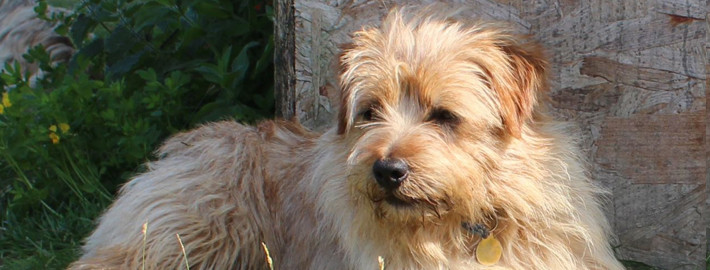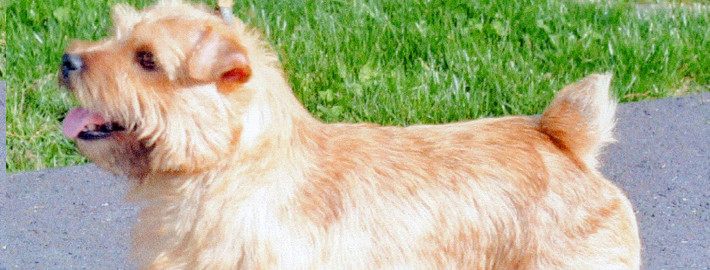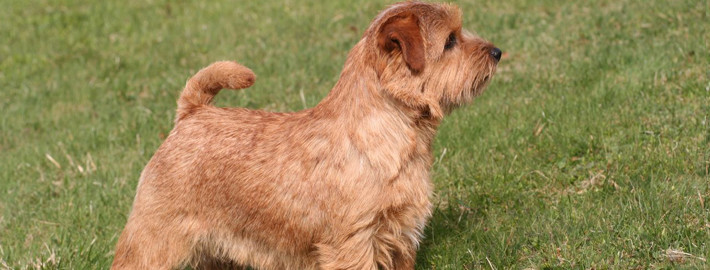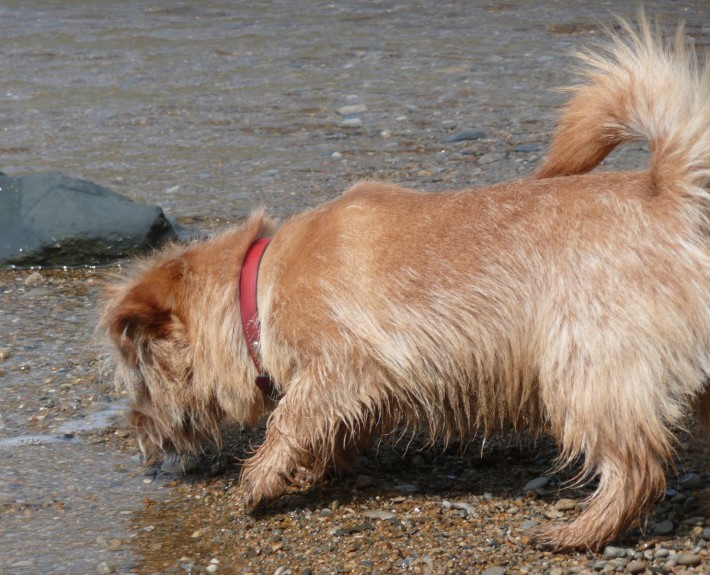What makes the Norfolk Terrier Unique?
Although they were created to serve as vermin catchers on farms, members of this small breed have been quickly moving into new careers as cossetted family pets.
Page Contents
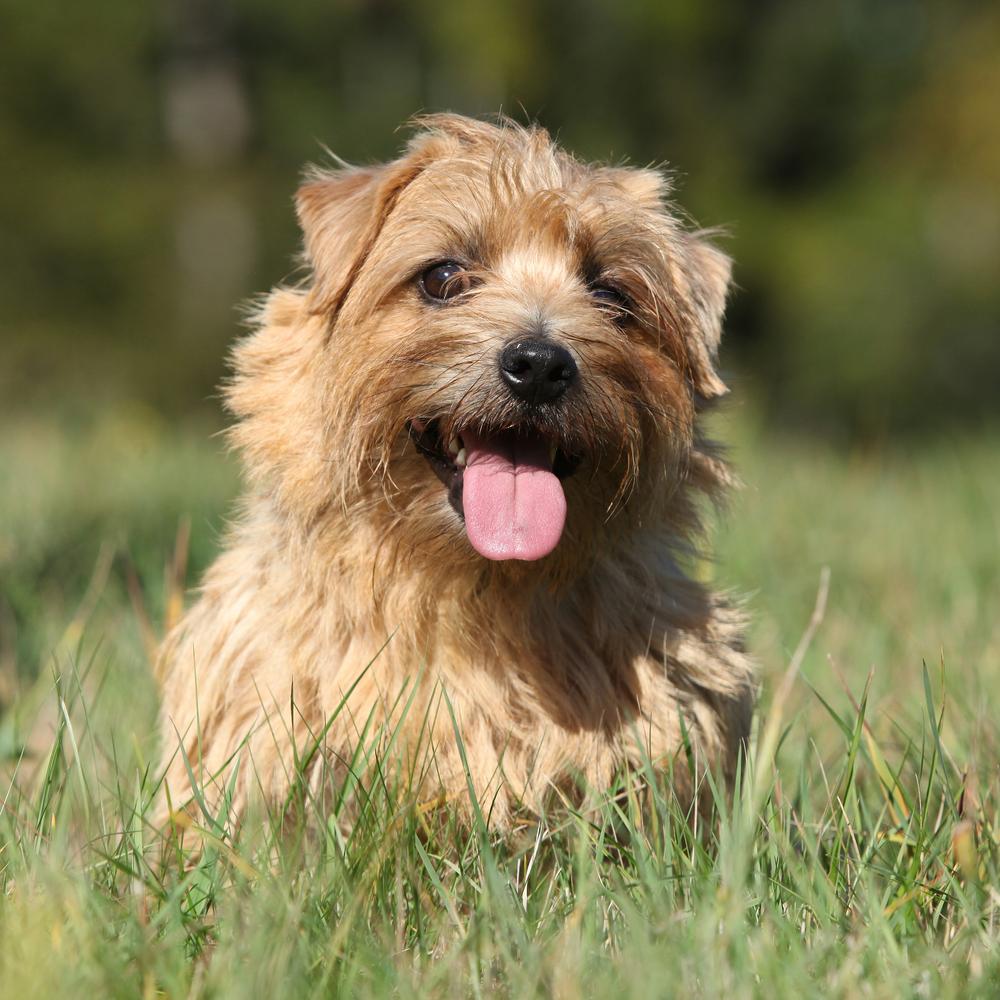
Is the Norfolk Terrier Right For You?
Norfolk Terriers are polite, if somewhat reserved, around strangers. However, these affectionate dogs get along just fine with people and other animals that they know well. Norfolk Terriers are devoted family members that like nothing better to be included in every activity that is taking place in their households.Because they were bred to work in packs, members of this are particularly fond of other canines and tend to treat them as partners-in-crime rather than adversaries. However, Norfolk Terriers tend to view smaller animals such as rats, gerbils, and hamsters as prey. Potential owners should, therefore, make their plans accordingly and keep these animals away from one another if they plan on keeping both as pets.
In 5 Words
- Spirited
- Lovable
- Fearless
- Companionable
- Self-confidence
Characteristics
Learn About the Norfolk Terrier
Description
General Description
Norfolk Terriers were created to be a working breed that was small enough to effectively hunt vermin but large enough to be a formidable adversary against them. Members of this breed have compact, athletic bodies with short legs and sturdy bones. These dogs are somewhat longer than they are tall. Norfolk Terriers also possess folded ears, bushy eyebrows, and thick beards. Sharply intelligent expressions can often be found in their brown eyes.
Size
Dogs of both genders stand around 10 inches (25 centimeters) in height. Members of this breed also have an average weight of anywhere from 10 to 12 pounds (4.5 to 5.5 kilograms).
Coat
Norfolk Terriers have a weather resistant, double-layer coat that can be black, red, wheaten, or grizzle in hue. Their fur is longer around their necks and shorter on their heads. However, the coarse outer layer of their coats typically measures around 1.5 to 2 inches in length. The soft inner layer is closer fitting and it also helps protect the dogs from the elements.
Short History of the Norfolk
Frank Jones first created the Norwich and the Norfolk Terriers at the beginning of the 20th century. He bred a variety of working terriers together in hopes of crafting a smaller breed that was more capable than the others at dealing with stable rats. As a bonus, the little terriers he created were also good at digging and brave enough to enter into fox dens, which made them valuable assets in hunting such prey.
As early as 1932, the Norwich Terriers were recognized by the United Kennel Club (UKC). Norfolk Terriers were originally considered to simply be a drop-eared version of the Norwich Terriers. However, the breeding lines separated shortly after the Second World War and they continued to diverge until they were recognized separately. The American Kennel Club (AKC) eventually allowed the Norfolk Terriers breed status in 1979.
Temperament
Norfolk Terriers are the physical embodiment of the all best and worst traits of their breed group. These intelligent little animals are friendly, lively, inquisitive, and independent. They greatly enjoy hunting as well as digging holes in their yards and boldly venturing into places that they probably shouldn’t. Their enthusiasm for life and their puppy like antics are some of their more endearing traits. Given their placid temperaments and their trainability, it’s not surprising that they would be a good choice for first time pet owners in both suburban and urban settings.
Norfolk Terriers are polite, if somewhat reserved, around strangers. However, these affectionate dogs get along just fine with people and other animals that they know well. Norfolk Terriers are devoted family members that like nothing better to be included in every activity that is taking place in their households.Because they were bred to work in packs, members of this are particularly fond of other canines and tend to treat them as partners-in-crime rather than adversaries. However, Norfolk Terriers tend to view smaller animals such as rats, gerbils, and hamsters as prey. Potential owners should, therefore, make their plans accordingly and keep these animals away from one another if they plan on keeping both as pets.
Caring for Your Norfolk Terrier
General Health
Born in litters of 2 to 5 puppies, Norfolk Terriers have an average lifespan of 8 to 14. However, some of these animals have even lived as long as 17 years and prospective owners should be prepared for that possibility. Common health issues in this breed include problems such as mitral valve disease, luxating patellas, hip dysplasia, and improperly aligned teeth. Of course, regular vet check-ups can help pet owners spot and treat any ailment that might arise before it becomes a major health concern.
Care
Daily
Although Norfolk Terriers have high energy levels, they will get along just fine if they’re allowed to have a day or two off from their workout regime. All the same, these lively little dogs require a great deal of mental stimulation and physical exercise in order to be at their best. Members of this breed are sure to enjoy long walks, running, jogging, and hiking. Norfolk Terriers are also good candidates for canine sports such as flat racing, fly ball, and lure coursing.
Weekly
All dogs, including Norfolk Terriers, should have their teeth cleaned on a regular basis to keep them in good oral health. A wide variety of products can be found to help these dogs keep their teeth looking sharp and pearly white.
Monthly
Parasite prevention medications will need to be administered to Norfolk Terriers on a regular basis in order for the products to be effective. A typical treatment usually lasts about one month.
Grooming & Bathing
Brushing these dogs on a weekly, if not a daily basis, with a steel comb is a good way to keep them looking neat and tidy. Members of this breed will also need to have their coats hand stripped at least twice a year. Norfolk Terriers do not require any other regular grooming, because cutting or clipping their fur could damage it. However, owners can give their pets as bath with regular dog shampoo if the animal in question becomes dirty. It’s also good idea to keep the dogs’ toenails trimmed and their ears cleaned out in order to keep them healthy.
Exercise & Training
As is the case with most canines, Norfolk Terriers need consistent rules, a firm hand, and lots of praise while they are in the process of being trained. Like many terriers, these dogs are also prone to occasional episodes of jealousy and bossiness. Members of this breed can also be quite hard to housetrain. Having a regular schedule for bathroom breaks can help in this regard but the task can still be difficult to accomplish.
Norfolk Terriers should always be kept on a leash if they aren’t playing indoors or in a securely fenced-in yard. After all, these dogs will happily chase any small animals that ventures into their path without any regard for their own safety. It goes without saying that this trait could have unfortunate results if it not carefully managed.

